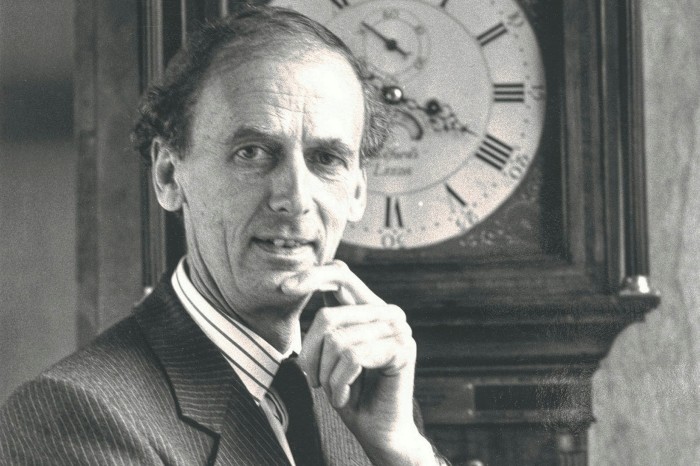A leading collection of antique British barometers, amassed by one of the driving forces behind the City of London’s Big Bang reforms, is to go under the hammer.
The family of the late Sir Nicholas Goodison, who was chair of the London Stock Exchange in the run-up to its deregulation in 1986, has put the collection up for sale. Goodison died last year at the age of 87.
While he cajoled the LSE’s established stockbroking firms into accepting modern practices that would pave the way for an era of expansion, Goodison maintained a scholarly and eclectic interest in arts and culture, including his specialist subject of barometers and clocks.
From the 1960s, when he worked for the family stockbroking firm HE Goodison, he amassed a trove of rare examples that demonstrated the key innovations of the 18th and 19th centuries. His book on the history of English barometers, published in 1968, became the definitive work on the subject.
Goodison’s collection of barometers, clocks and watches — as well as paintings and sculpture — is due to be auctioned at Christie’s in London on May 25, with an estimated value of £3mn.
A total of 16 barometers and nine clocks are to be sold. These include a 1705 clock by Thomas Tompion, the most prominent maker of his day, and a mahogany-encased barometer by George Adams from the time of George III.
Another highlight is a long-case “grandfather” clock from the 1680s by Richard Greenhill. Goodison first set eyes on the rare timepiece when, as a junior partner in the family firm, he was required to deliver share certificates by hand to a longstanding client who distrusted the postal service.
Difficult and apparently hard-of-hearing, the client owned a large collection of clocks of unrivalled quality. When Goodison expressed his admiration for these examples — and revealed his erudition — the client “miraculously rediscovered his ability to hear”, said Charles Cator, deputy chair of Christie’s International. Goodison went on to buy the grandfather clock at auction after the client’s death.

After overseeing the deregulatory reform at the LSE, he chaired TSB bank. Around the same period, he chaired cultural institutions including the Courtauld Institute and the Craft Council.
It was Goodison who spied an opportunity for museums and galleries to benefit from lifetime gifts of art works and artefacts, not just those bequeathed after a donor’s death.
His ideas — contained in the government-commissioned Goodison review of 2004 — eventually became adopted in the cultural gifts scheme, which allows UK taxpayers to donate art for public benefit and gain a tax reduction based on a portion of the gift’s value.
Goodison himself did not use the scheme in his lifetime, but instead made regular donations to the Fitzwilliam Museum in Cambridge via his family foundation.
Cator, a friend of Goodison, said he had assembled not just a collection but “a series of distinct collections”: the sale also includes postwar British works by William Turnbull, Peter Lanyon and Keith Vaughan, as well as sculptures by Barbara Hepworth and Elizabeth Frink.






